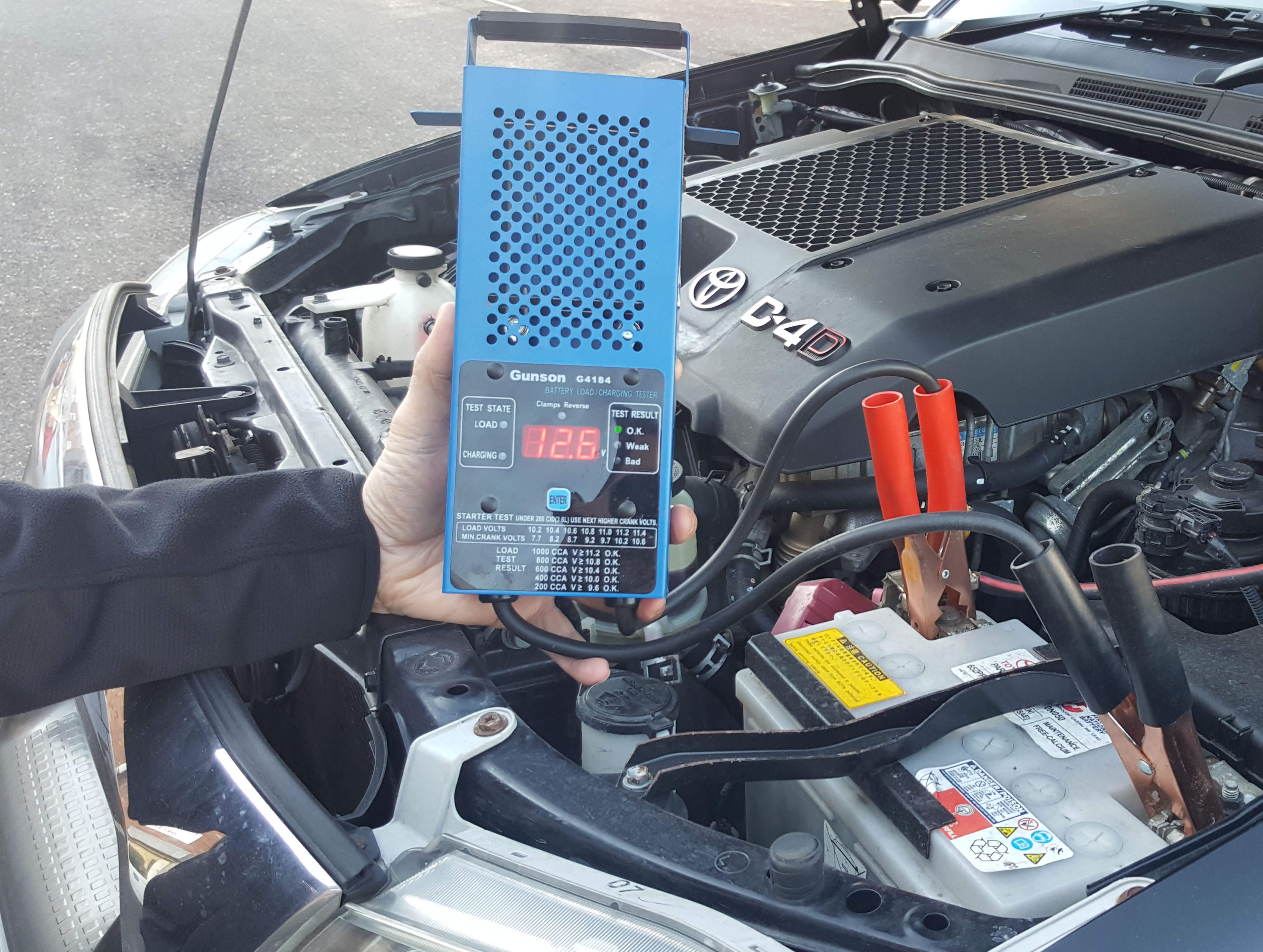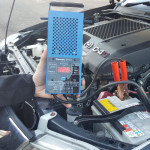The most common and effective way of checking your vehicles car battery is holding the correct voltage charge is by using a quality drop tester or a multimeter. A good battery should hold a charge of 12.6 volts. If it isn’t you should replace it or try charging the battery.
 Digital Drop Test
Digital Drop Test
A voltage drop test is the most effective way to test your vehicles batteries and it only takes 10 seconds, it will show you immediately whether you have a good, weak or bad connection as well as the voltage charge.
Drop testing is a quick and simple test that doesn’t require removal of any battery cables.
You can purchase a digital drop tester for very little these days, alternatively if you take it to a mechanic, they will usually perform a drop test free of charge.
Digital Multimeter Test
Testing a car battery with a digital multimeter is also very effective and again only take seconds to perform. Holding the probes on the positive and negative battery terminals will display the voltage charge.
You should always test a vehicle battery when the vehicle is turned off otherwise the reading will display the charge coming from the alternator.
What could be the cause of a low charge?
Loose, corroded or damaged battery cables or ground straps can choke off the normal flow of current. And if the current can't get through, the starter won't have the power to crank the engine and the battery will not receive the correct amperage it needs to maintain a full charge.
Nasty looking battery terminals that are blooming with corrosion obviously need cleaning. Corrosion forms an almost invisible barrier between the battery terminals and cables. To the naked eye, the terminals and cables look fine. But high resistance in the connections is preventing the high amp current from getting through.
A faulty or damaged alternator is usually caused by a weak battery, corrosion or worn bearings on alternator pulley, if your alternator is not charging the battery this can be due to your battery not holding the correct charge.
